Let's See San Diego Harbor
Did you know? San Diego Bay is a natural harbor adjacent to San Diego, California. It is 12 mi/19 km long, 1 mi/1.6 km–3 mi/4.8 km wide. The bay is bordered by the cities of San Diego, National City, Chula Vista, Imperial Beach and Coronado.
Considered to be one of the best natural harbors on the western coasts of the North American continent, San Diego Bay was among the earliest portions of those coasts to be settled by Europeans; it was colonized by Spain beginning in 1769. Later it served, and continues to serve to this day, as the home of the United States Navy's Pacific Fleet.

The San Diego Bay
Did You Know? The western border of the bay is protected from the Pacific Ocean by a long, narrow strip of land called the Silver Strand. The northern end of the Silver Strand expands to become North Island, the location of Naval Air Station North Island (the home port of several aircraft carriers including the USS Ronald Reagan) and Coronado. Coronado is the site of the famous Hotel del Coronado. The U.S. Navy has three other facilities on the bay: Naval Station San Diego, Naval Base Point Loma at Ballast Point, which is a Nuclear Submarine base, and Naval Amphibious Base Coronado. The Coast Guard Air Station San Diego is across the bay from NAS North Island and the Federal Communications Commission maintains a monitoring station on the Silver Strand. Several other Navy facilities are located in the surrounding area, and even more existed previously but have since been closed. The U. S. Marine Corps also operates one of its two Recruit Depots near the shores of San Diego Bay.

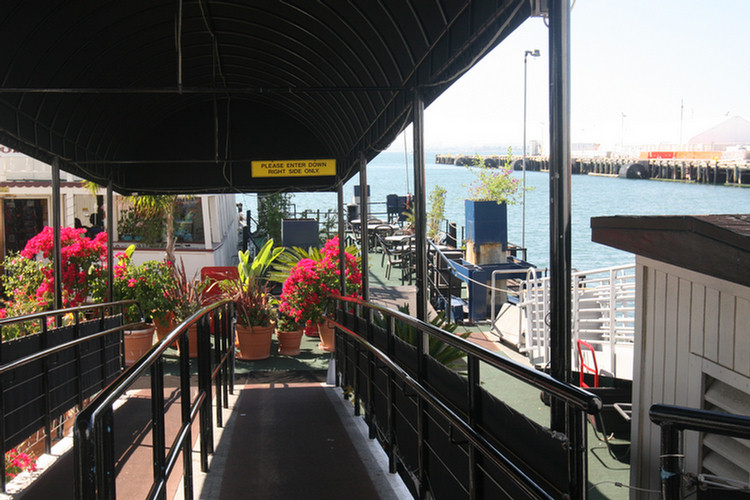
We caught the cruise to the right... And enjoyable wait
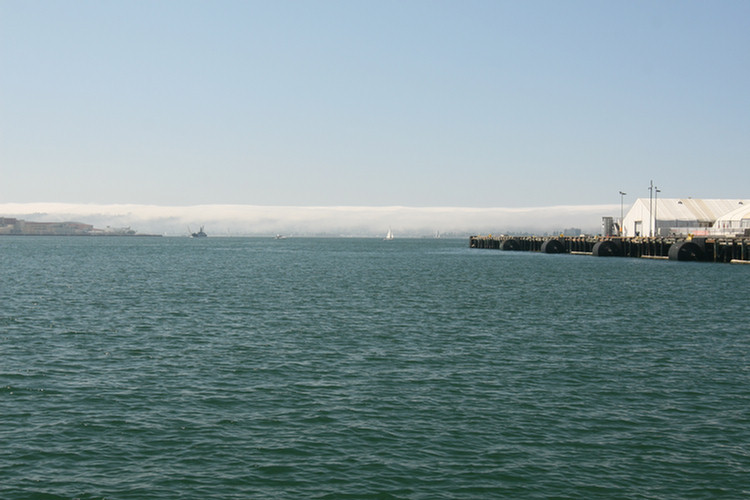
The marine layer was lurking in the distance
Did you know? - A marine layer is an air mass which develops over the surface of a large body of water such as the ocean or large lake in the presence of a temperature inversion. The inversion itself is usually initiated by the cooling effect of the water on the surface layer of an otherwise warm air mass. As it cools, the surface air becomes denser than the warmer air above it, and thus becomes trapped below it. The layer may thicken through turbulence generated within the developing marine layer itself. It may also thicken if the warmer air above it is lifted by an approaching area of low pressure. The layer will also gradually increase its humidity by evaporation of the ocean or lake surface, as well as by the effect of cooling itself. Fog will form within a marine layer where the humidity is high enough and cooling sufficient to produce condensation. Stratus and stratocumulus will also form at the top of a marine layer in the presence of the same conditions there.
In the case of coastal California, the offshore marine layer is typically propelled inland by a pressure gradient which develops as a result of intense heating inland, blanketing coastal communities in cooler air which, if saturated, also contains fog. The fog can last until midday when the heat of the sun is frequently strong enough to evaporate it. This phenomenon is especially common in the late spring and early summer, where it is locally referred to as "May gray" or "June gloom." An approaching frontal system or trough can also drive the marine layer onshore.
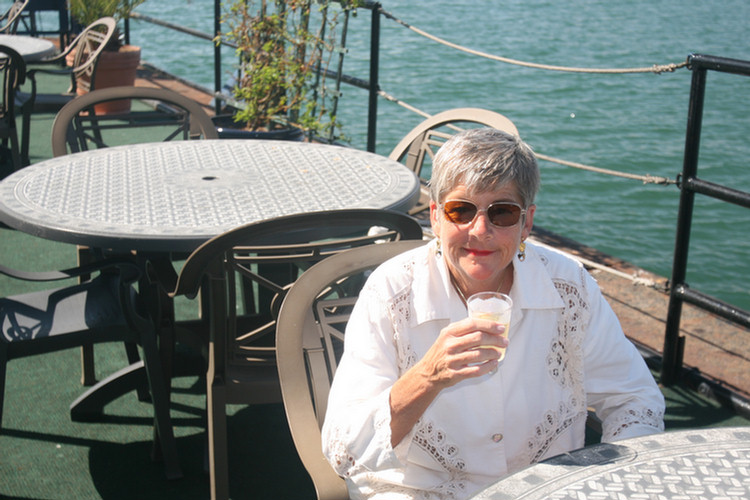
A pre-boarding glass of wine is required
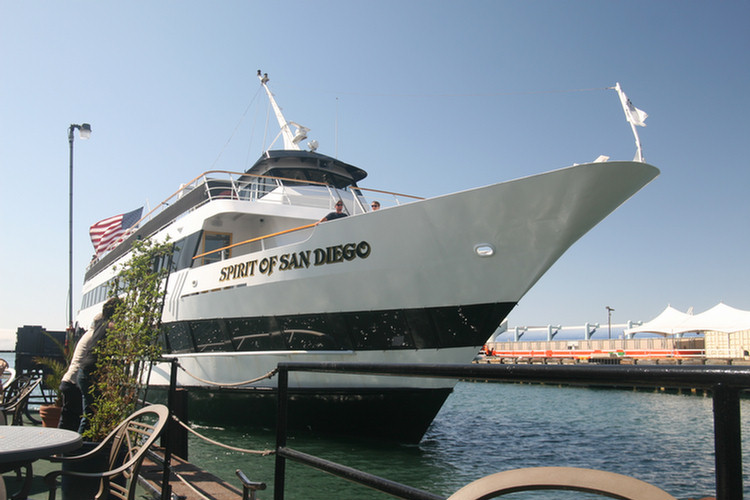
She has a passenger capacity of 550 people... We had 30 today!

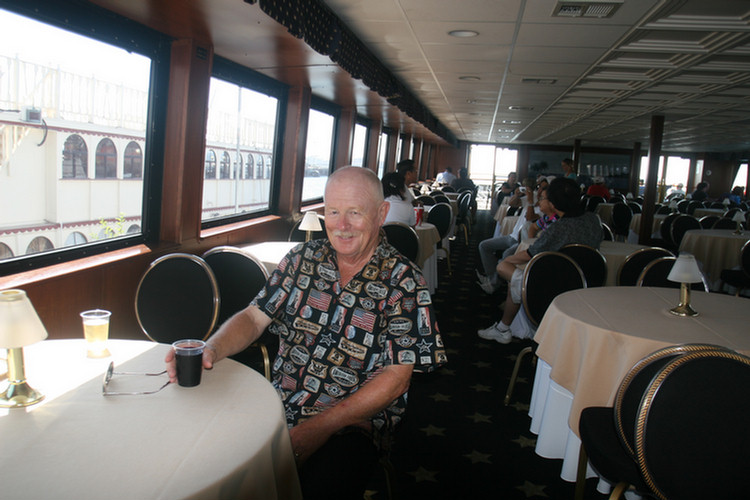
Plenty of room and a bar!
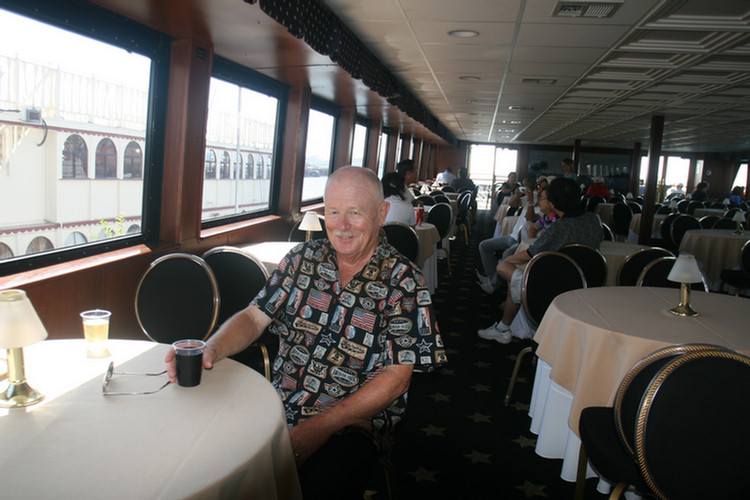
Departure provided quite a nice view
Did you know? - San Diego International Airport is also adjacent to the bay, across Harbor Drive from the Coast Guard Station. General Dynamics' National Steel and Shipbuilding Company (NASSCO), the only shipyard on the west coast capable of building and repairing large ocean-going vessels, is near the San Diego side of the San Diego-Coronado Bay Bridge.
San Diego Bay's commercial port has two container ship facilities (one for refrigerated containers) and a cruise ship terminal. The port handles more than 3 million metric tons of cargo annually. The cruise ship terminal hosts more than 250 ship calls a year totaling nearly 1 million passengers. A second cruise ship terminal is under construction and is expected to open in December 2010. Commercial sport fishing boats depart all year round from two docks in Point Loma. Small boat sailing is extremely popular, and the bay is lined by dozens of marinas and nine yacht clubs, including the San Diego Yacht Club which was the home of the America's Cup from 1988 to 1995. An inlet of the bay was renamed America's Cup Harbor to commemorate that occasion.
Several museum ships call San Diego Bay home. They include the USS Midway, the largest aircraft carrier museum, and the Star of India, the oldest iron hulled merchant ship still afloat. The Star of India and several other boats and ships on San Diego Bay are the floating collection of the San Diego Maritime Museum; they are open to the public for a fee.
The Northern Harbor For The First Hour

The USS Midway

The Star Of India
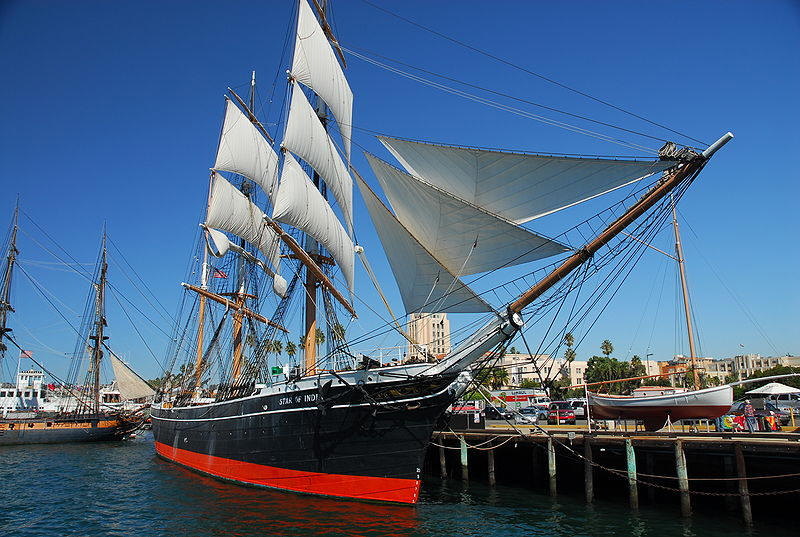
Did you know? - Star of India was built in 1863 as Euterpe, a full-rigged iron windjammer ship in Ramsey, Isle of Man. After a full career sailing from Great Britain to India then to New Zealand, she became a salmon hauler on the Alaska then to California route. After retirement in 1926, she was restored between 1962 and 1963 and is now a seaworthy museum ship ported at the San Diego Maritime Museum in San Diego. She is the oldest ship that still sails regularly and the oldest iron hulled merchant ship still floating. The ship is both a California and United States National Historic Landmark.
The 1863 Star of India is the fourth oldest ship afloat in the United States, after the 1797 USS Constitution, the 1841 Charles W Morgan, and 1854 USS Constellation, and is the oldest ship in the entire world that still sails regularly. Unlike many preserved or restored vessels, her hull, cabins and equipment are nearly 100% original.

The relaxing way to travel
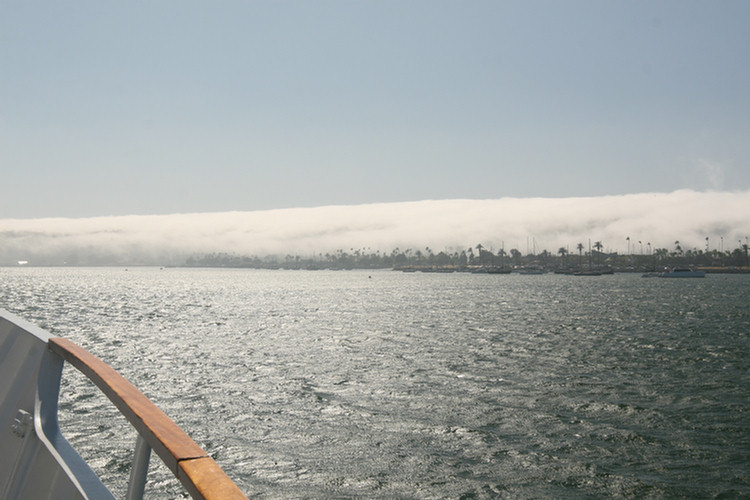

Navy air stations are everywhere!
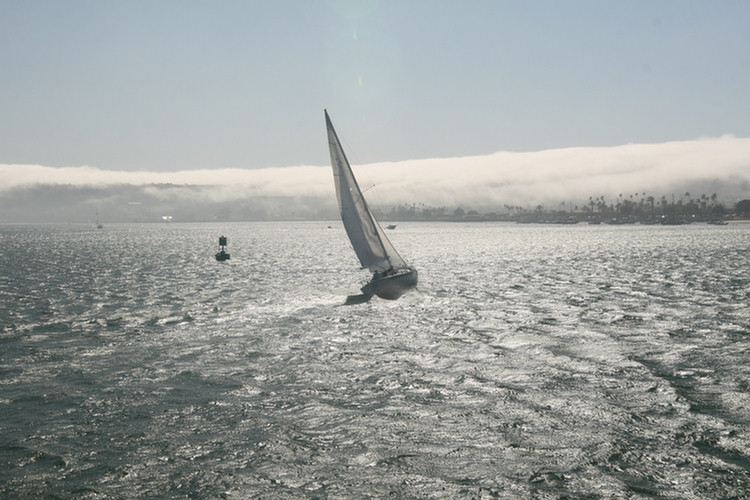
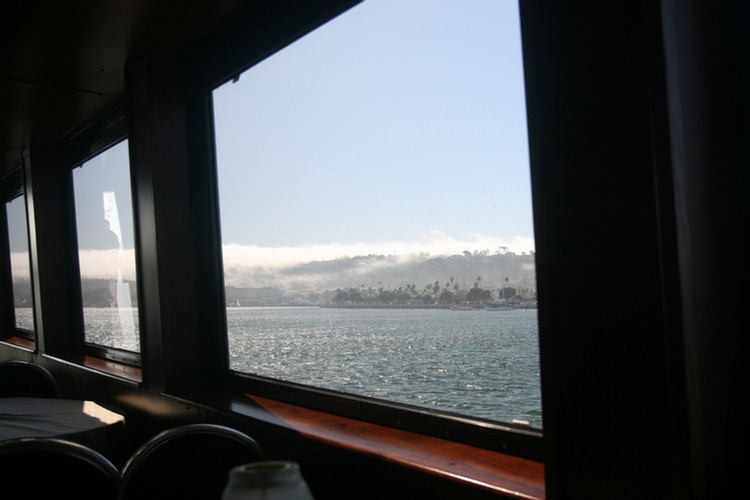
Sea Lions Rest Near Point Loma
Did you know? - Loma is the Spanish word for hill. The original name of the peninsula was La Punta de la Loma de San Diego, translated as Hill Point of San Diego. This was later anglicized to Point Loma.

Resting on barges... there were hundreds of Sea Lions
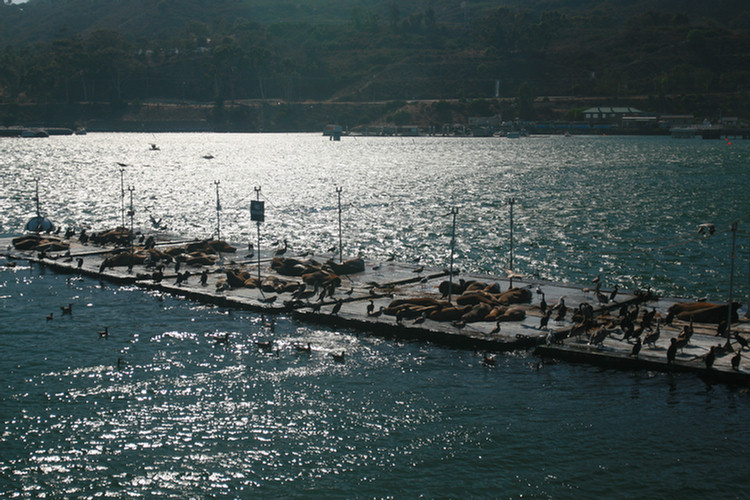
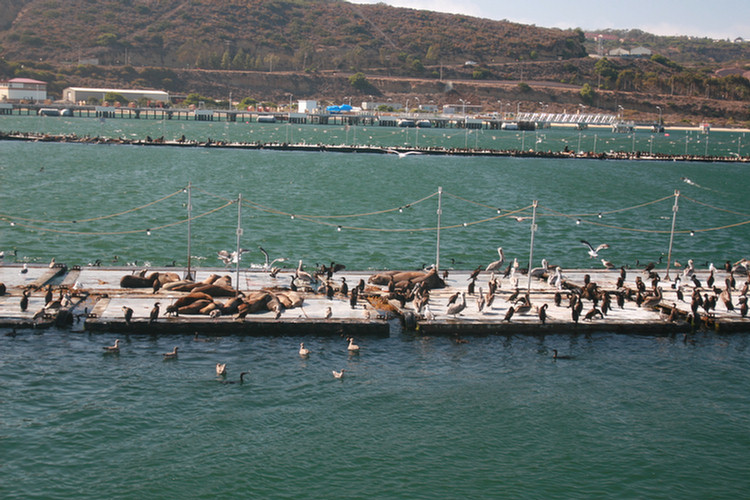
And a load of birds!
Heading South
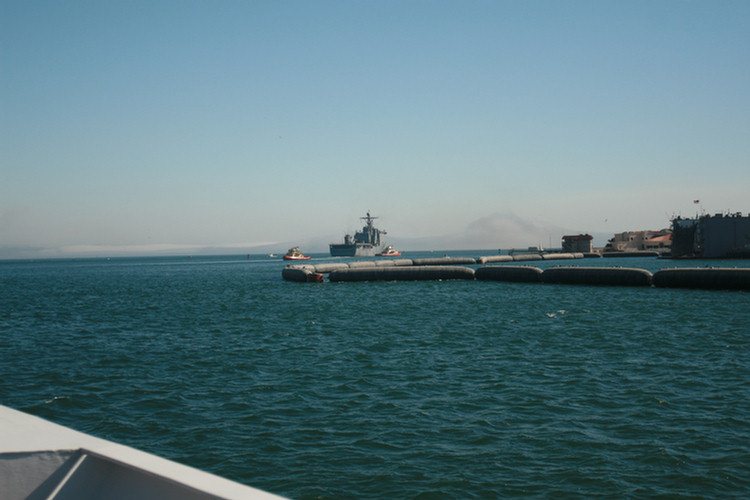
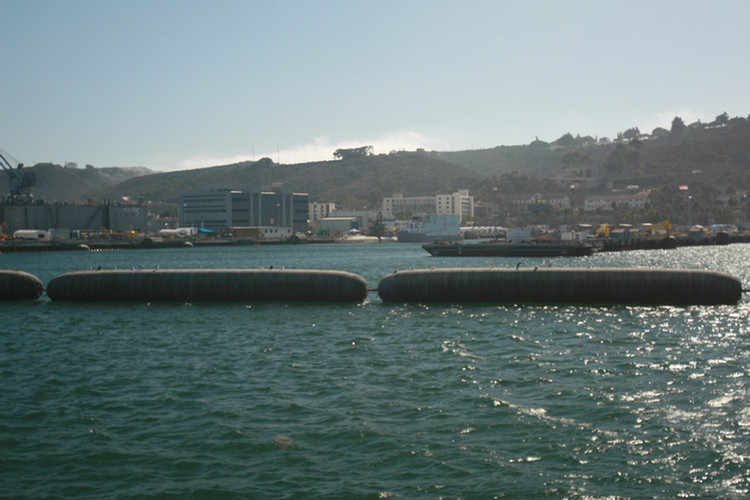
USS Submarine Base
Did you know? - Located in Point Loma, a neighborhood of San Diego, California, Naval Base Point Loma (NBPL) was established on 1 October 1998 when Navy facilities in the Point Loma area of San Diego were consolidated under Commander, Navy Region Southwest. Naval Base Point Loma consists of seven facilities: Submarine Base, Fleet Antisubmarine Warfare Training Center, Fleet Combat Training Center Pacific, Space and Naval Warfare Systems Command (SPAWAR), SPAWAR Systems Center, the Fleet Intelligence Command Pacific and Naval Consolidated Brig, Miramar. These close-knit commands form a diverse and highly technical hub of naval activity. The on base population is around 22,000 Navy and civilian personnel

What's behind the covers???
Did you know? - In February 1852 President Millard Fillmore set aside the southern portion of Point Loma of about 1,400 acres (6 km2) for military purposes. Subsequently, it was assigned to the U.S. Army and named Fort Rosecrans, after General William Rosecrans, an 1842 graduate of the U.S. Military Academy. In 1898 the Army built a coast artillery installation on the site which remained active until 1945. Aerial view of Naval Base Point Loma.
In 1959 Fort Rosecrans was turned over to the U.S. Navy. The Navy Submarine Support Facility was established in November 1963 on 280 acres (1.1 km2) of the land. On 27 November 1974 the base was re-designated a shore command, serving assigned submarines, Submarine Group Five, Submarine Squadron Three, Submarine Development Group One, the Submarine Training Facility and later, Submarine Squadron Eleven. On 1 October 1981 the base was designated as Naval Submarine Base.

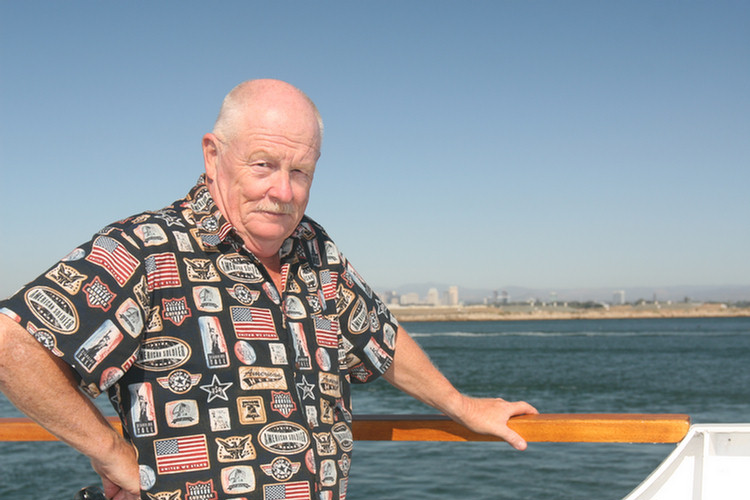
The Captain

The Admiral

Naval stations for arming the ships and weapons storage
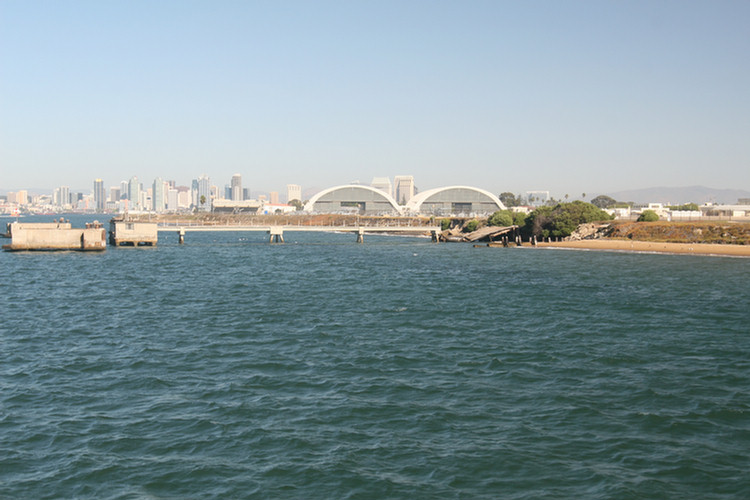
The Second Hour... Going South

San Diego-Coronado Bridge
Did you know? - The bay is spanned by the San Diego-Coronado Bridge, built in 1969. The bridge curves and rises to a height of 200 feet above the water so that Navy ships can pass under it. (However, the vertical clearance is insufficient for Nimitz-class aircraft carriers, which is why these are docked north of the bridge.) The bridge was originally a toll bridge; however, toll collection was discontinued several years ago, when the bridge's construction loans were paid in full.
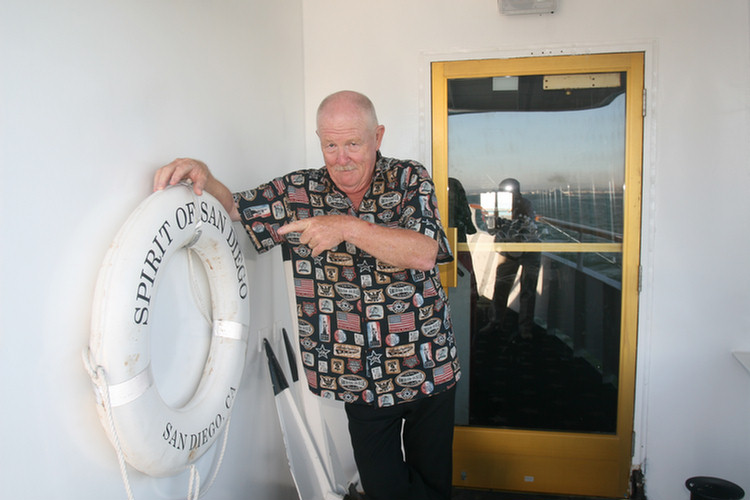
Paul's favorite friend
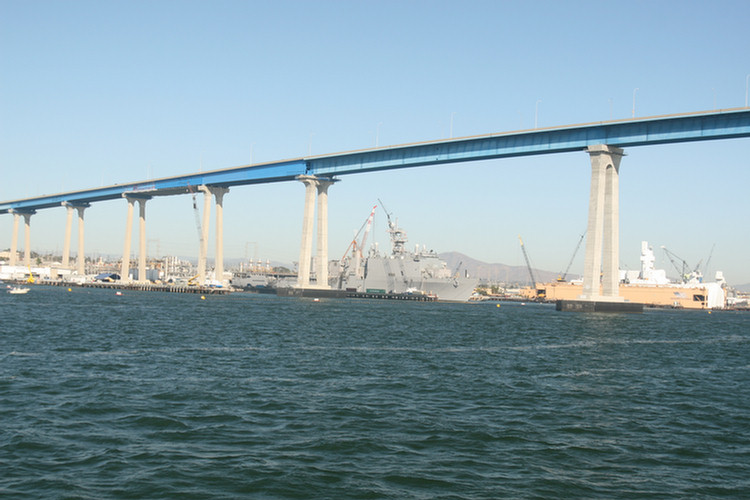
Did you know?
- Principal architect: Robert Mosher
- Opened on August 3, 1969
- in 1970, it won the Most Beautiful Bridge Award from American Institute of Steel Construction
- 2.12 miles (11,179 feet) long
- cost $50 million to build
- retrofitting cost $70-150 million
- 20,000 tons of steel (13,000 tons in structural steel and 7,000 in reinforcing steel)
- 94,000 cubic yards of concrete
- 900,000 cubic yards of dredged fill
- some caissons for the towers were drilled and blasted 100 feet into the bed of the San Diego Bay
- 4.67% grade from Coronado to San Diego
- side railings are concrete blocks only 34 inches high
- over 50 people worked 24 hours a day, seven days a week to maintain the bridge and take its tolls - tolls have since been discontinued
- the grade, 200 foot clearance at peak, and the 90-degree angle turn is to create clearance for an empty oil-fired aircraft carrier to pass beneath it - it is not sufficient for Nimitz-class nuclear aircraft carriers
- the bridge is the third largest orthogonal box in the country - the box is the center part of the bridge, between piers 18-21 over main shipping channel

Note the Guided Missile Cruiser lurking in the back
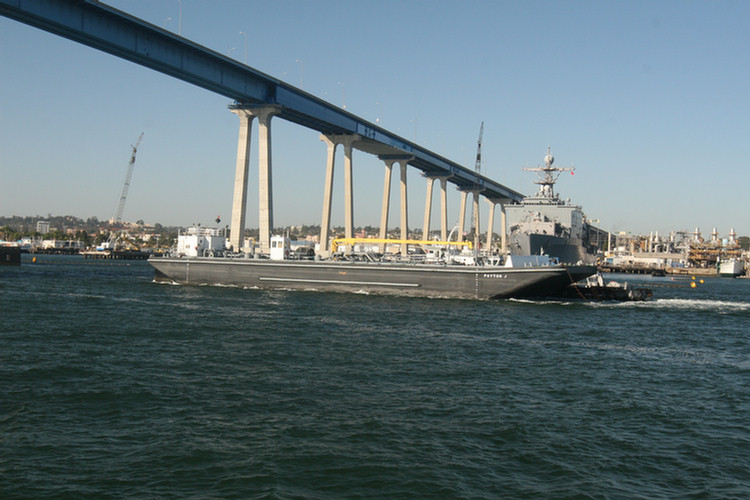
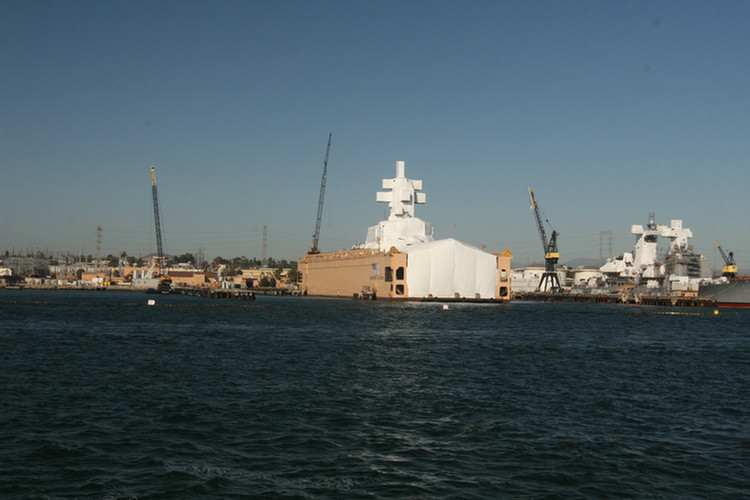
Nope! You guessed wrong...
It's covered to protect the local environment from the chemicals
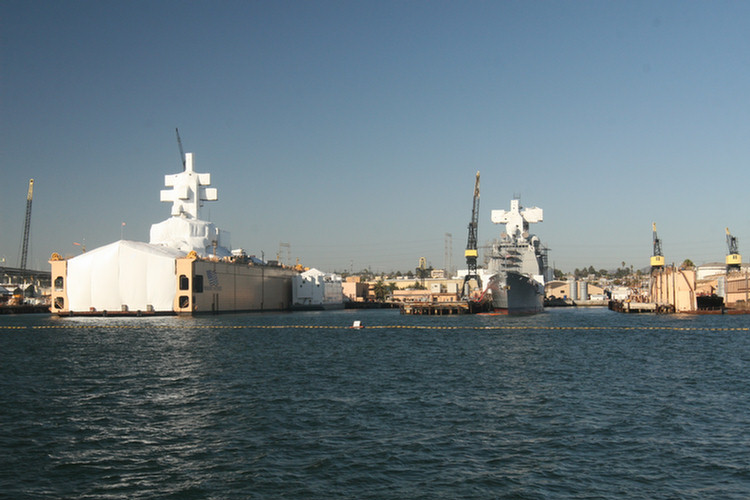
Many destroyers were in port

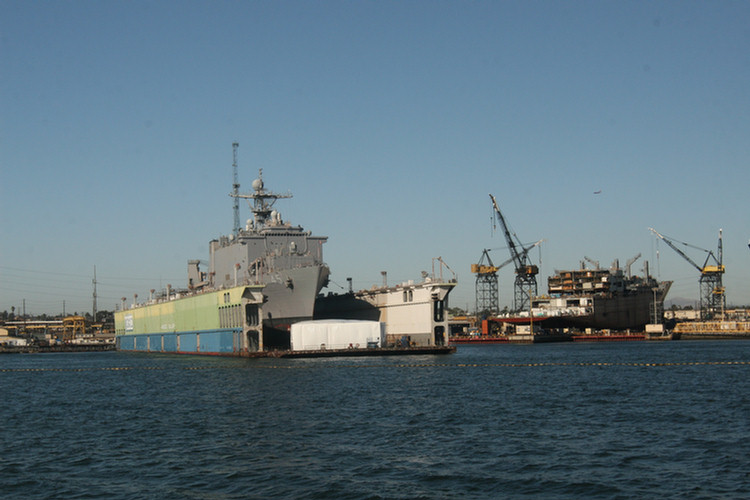
Many dry-docks are in operation
Did you know? - A dry-dock is a narrow basin or vessel that can be flooded to allow a load to be floated in, then drained to allow that load to come to rest on a dry platform. Dry-docks are used for the construction, maintenance, and repair of ships, boats, and other watercraft.
A floating dry-dock is a type of pontoon for dry docking ships, possessing floodable buoyancy chambers and a "U" shaped cross-section. The walls are used to give the dry-dock stability when the floor is below the water level. When valves are opened the chambers are filled with water, the dry dock floats lower in the water, allowing a ship to be moved into position inside. When the water is pumped out of the chambers, the dry-dock rises and the deck is cleared of water, allowing work to proceed on the ship's hull.
A typical floating dry-dock involves multiple rectangular sections. These sections can be combined to handle ships of various lengths, and the sections themselves can come in different dimensions. Each section contains its own equipment for emptying the ballast and to provide the required services, and the addition of a bow section can facilitate the towing of the dry-dock once assembled. For smaller boats, one-piece floating dry-docks can be constructed, potentially coming with their own bow and steering mechanism.
Shipyards operate floating dry-docks, among other means of hauling or docking vessels. The advantage of floating dry-docks is that they can be moved all over the world and also can be sold second-hand. During World War II, the U.S. Navy used such (floating) dry-docks extensively to provide maintenance in remote locations. One of these, the 850-foot AFDB-3, saw action in Guam, was mothballed near Norfolk, Virginia, and was eventually towed to Portland, Maine, to become part of Bath Iron Works' repair facilities.
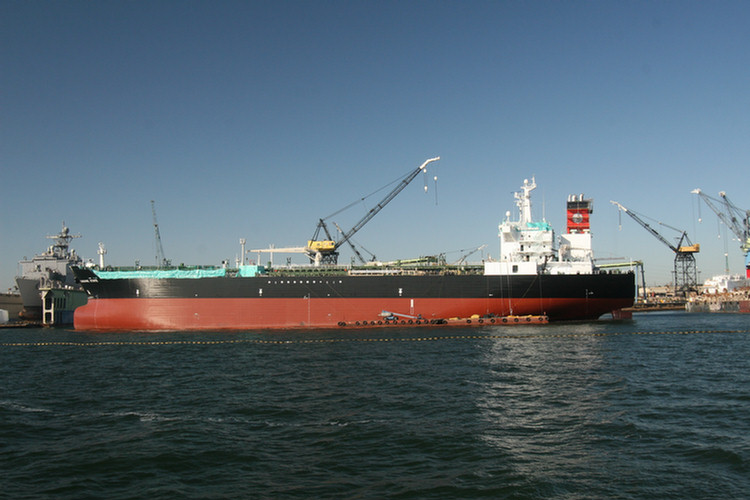
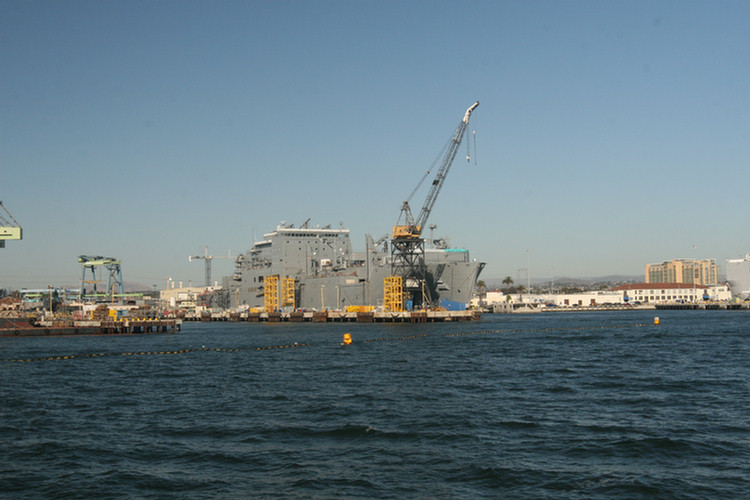
Major modifications underway
Hospital Ship Was In Port Ready To Go When Needed

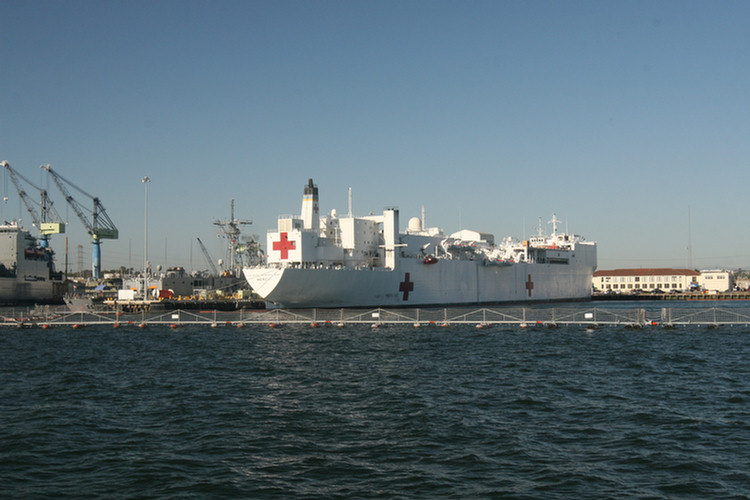
Did you know? - A hospital ship is a ship designated for primary function as a medical treatment facility or hospital; most are operated by the military forces or navies of various countries around the world, as they are intended to be used in or near war zones. Firing on a hospital ship is generally considered a war crime.
On 8 December 1798, unfit for service as a warship, HMS Victory was ordered to be converted to a hospital ship to hold wounded French and Spanish prisoners of war. Another early example of a hospital ship was USS Red Rover in the 1860s, which aided the wounded soldiers of both sides during the American Civil War. It was the sighting by the Japanese of the Russian hospital ship Orel, correctly illuminated in accordance with regulations, that led to the Battle of Tsushima during the Russo-Japanese War. Orel was retained as a prize of war by the Japanese after the battle. During World War I and World War II, some passenger liners were converted for use as hospital ships. RMS Aquitania and HMHS Britannic were two examples of ships serving in this capacity.
The last British Royal Yacht, the post World War II HMY Britannia, was ostensibly constructed in a way as to be easily convertible to a hospital ship, but this is now thought to be largely a ruse to ensure Parliamentary funding, and she never served in this role - reputedly her lifts were too small to take standard-sized stretchers. USNS Mercy and USNS Comfort are hospital ships now operated by the United States Navy, and are the largest naval ambulances extant. Both ships are converted oil tankers
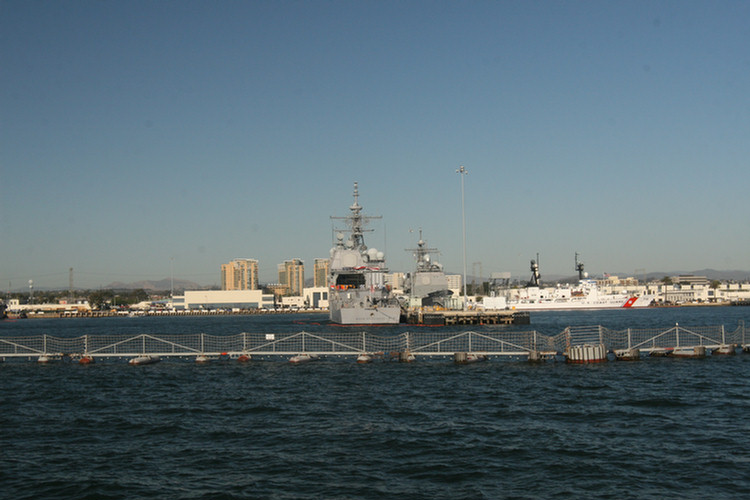
Notice the nets around the naval base...

An in-service carrier
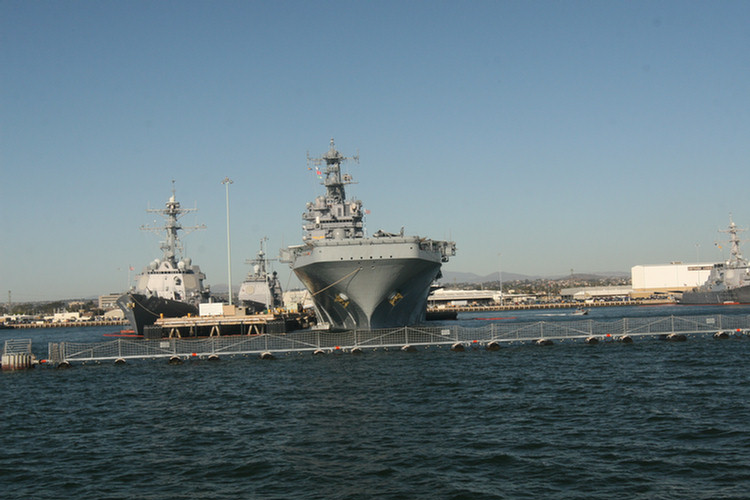
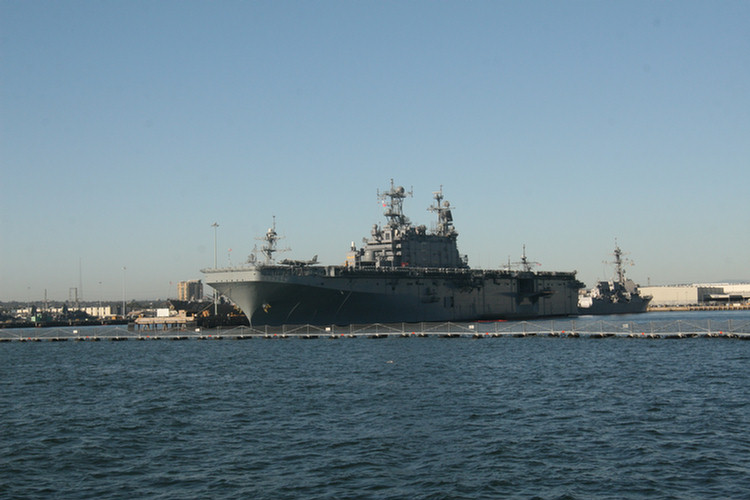
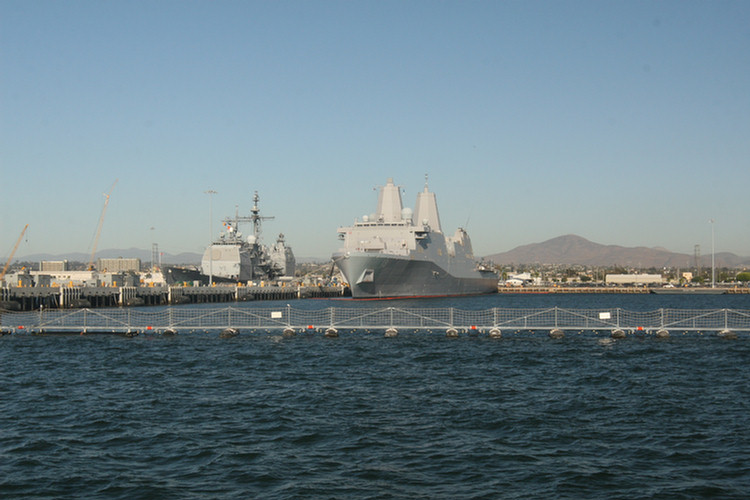
Stealthy designs appearing everywhere
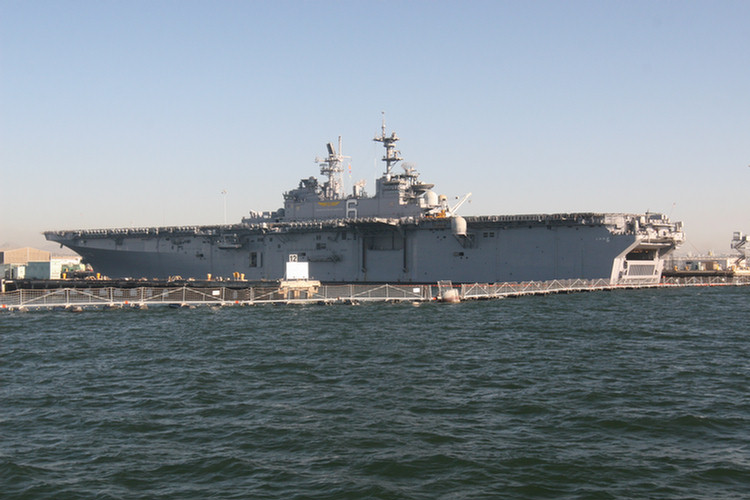
Helicopter landing vessel
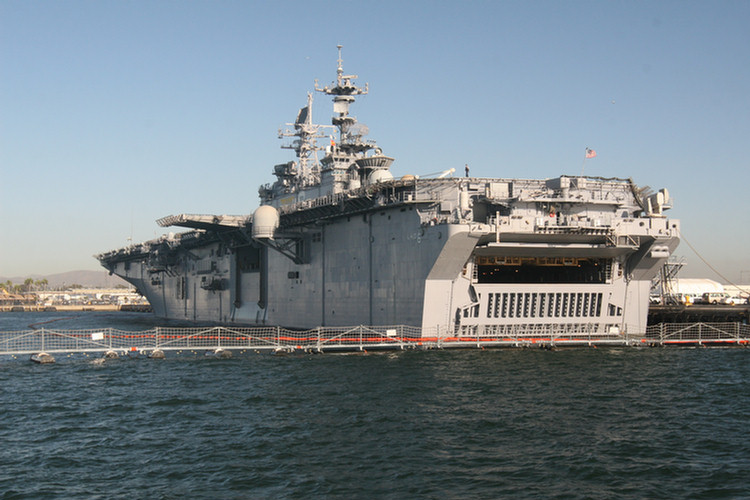
The back end opens up so it can deliver its cargo... Landing vehicles

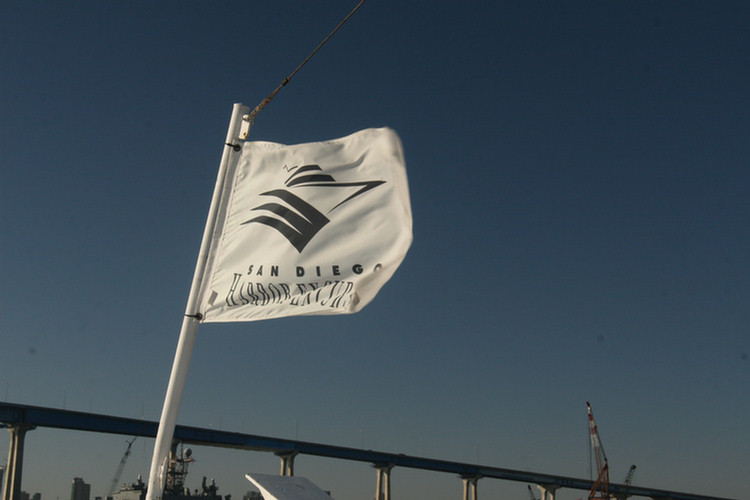
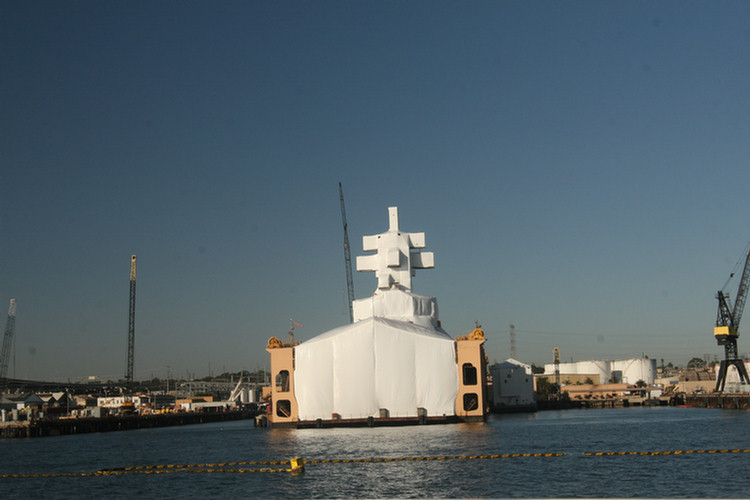
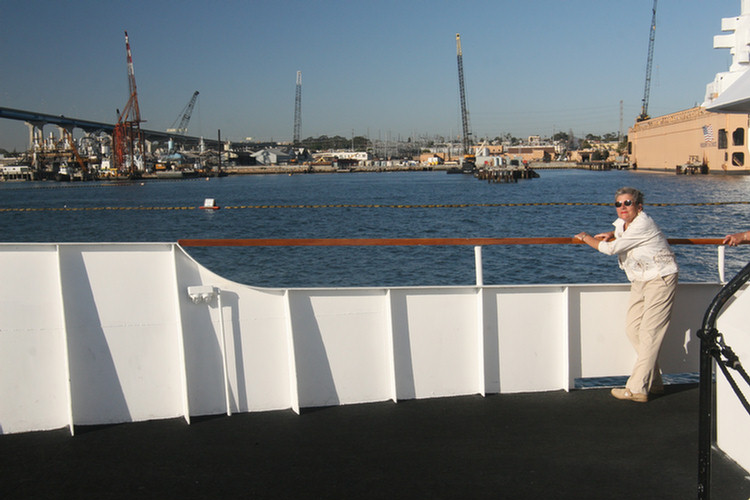
She has spotted the USS Midway
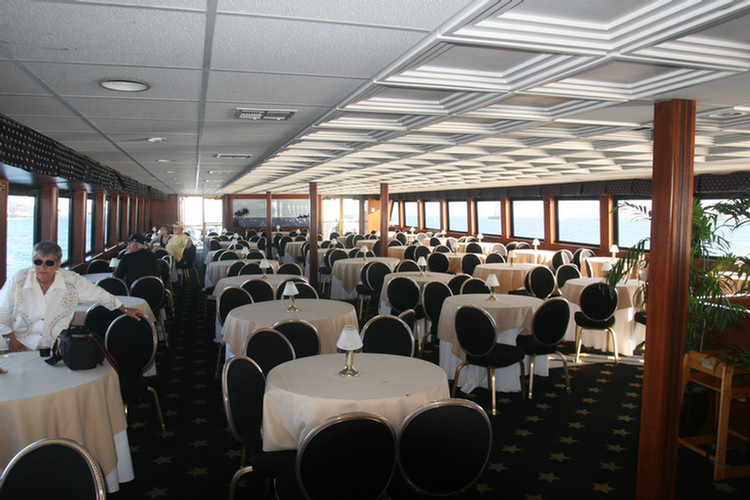
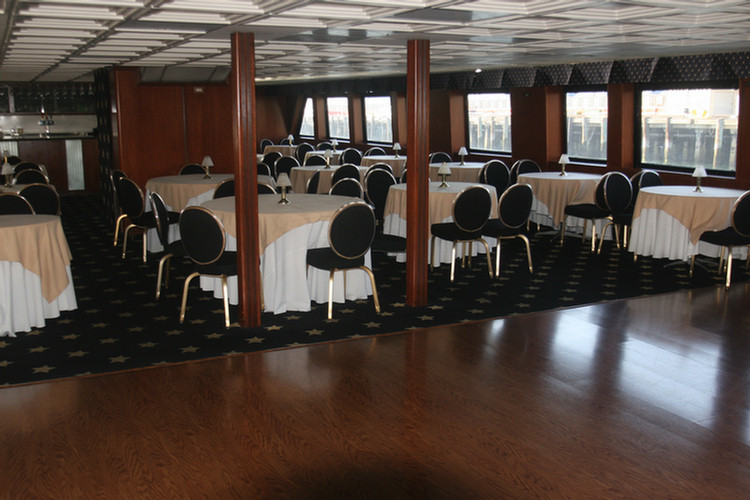
H-m-m-m-m-m Dinner dance anyone?
